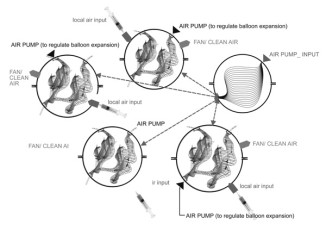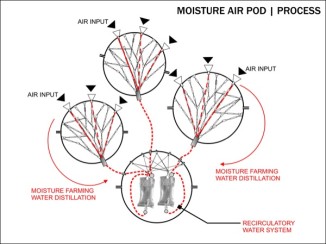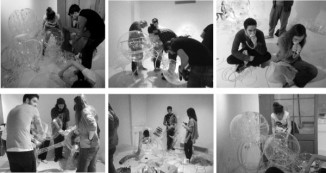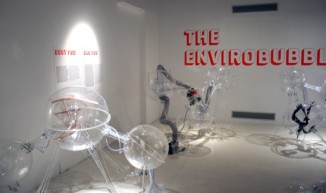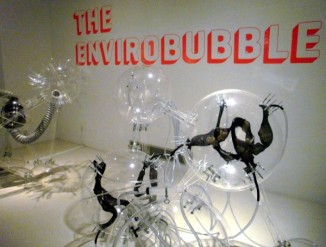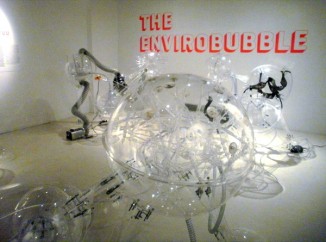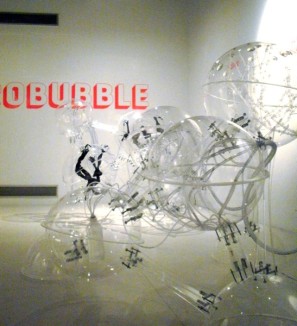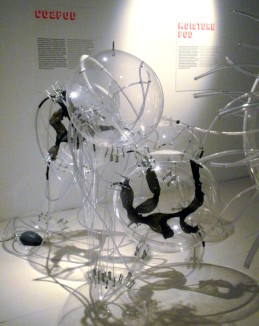THE ENVIROBUBBLE
THE ENVIROBUBBLE
Credits: Lydia Kallipoliti, Michael Young, Marianthi Liapi, Kostis Oungrinis and Anna Pla Catalá
Student Project Team from the Technical University of Crete, Greece: Georgios Andresakis, Yiannis Apostolopoulos, Tzeny Gorantonaki , Eirini Kalogeropoulou, Michalis Kantarzis, Despina Linaraki, Ioannis Liofagos, Dimitris Mairopoulos, Evangelos Alexandros Maistralis, Anna Neratzouli , Iasonas Paterakis, Eleni Roupa, Aggeliki Terezaki, Alma Tralo, Vassilis Tsesmetzis, Dimitris Vaimakis, Anna-Maria Moschouti-Vermer, Georgia Voradaki.
The “Envirobubble” installation is the result of a summer workshop held at the Technical University of Crete, Greece in August 2010. The installation was exhibited at the Design Museum of Barcelona in Spain (Disseny Hub) in the spring of 2011.
In 1972, the underground architecture group Antfarm created a pneumatic envelope at the University of California at Berkeley envisioned as a “Clean Air Pod,” where people could breathe safely sealed off from the air pollution outside. The Clean Air Pod (CAP) would screen out deadly pollutants and protect the people enveloped in the bubble.
Revisiting this project, this installation raises issues on air quality still eminent today, though questioning at the same time if the air we breathe indoors is more hazardous than the air we breathe outdoors. “The envirobubble” seeks to expand awareness from outdoor to indoor air quality and alert visitors as to the breathable air in heavily sealed air conditioned buildings, with high degrees of condensation.
“The envirobubble” presents four types of air pods as purifying machines. Each cluster of air pods performs and visualizes a purification process focusing on different types of pollutants: A) Dust (particulate inorganic matter) B) Moisture (humidity levels) D) Gas (toxic off-gas emissions E) CO2 (plant respiration). By opening up a perspective on the development of indoor air quality as an architectural design problem, rather than an engineering problem, the aim is to initiate a vital reassessment of environmental control in design terminology.


